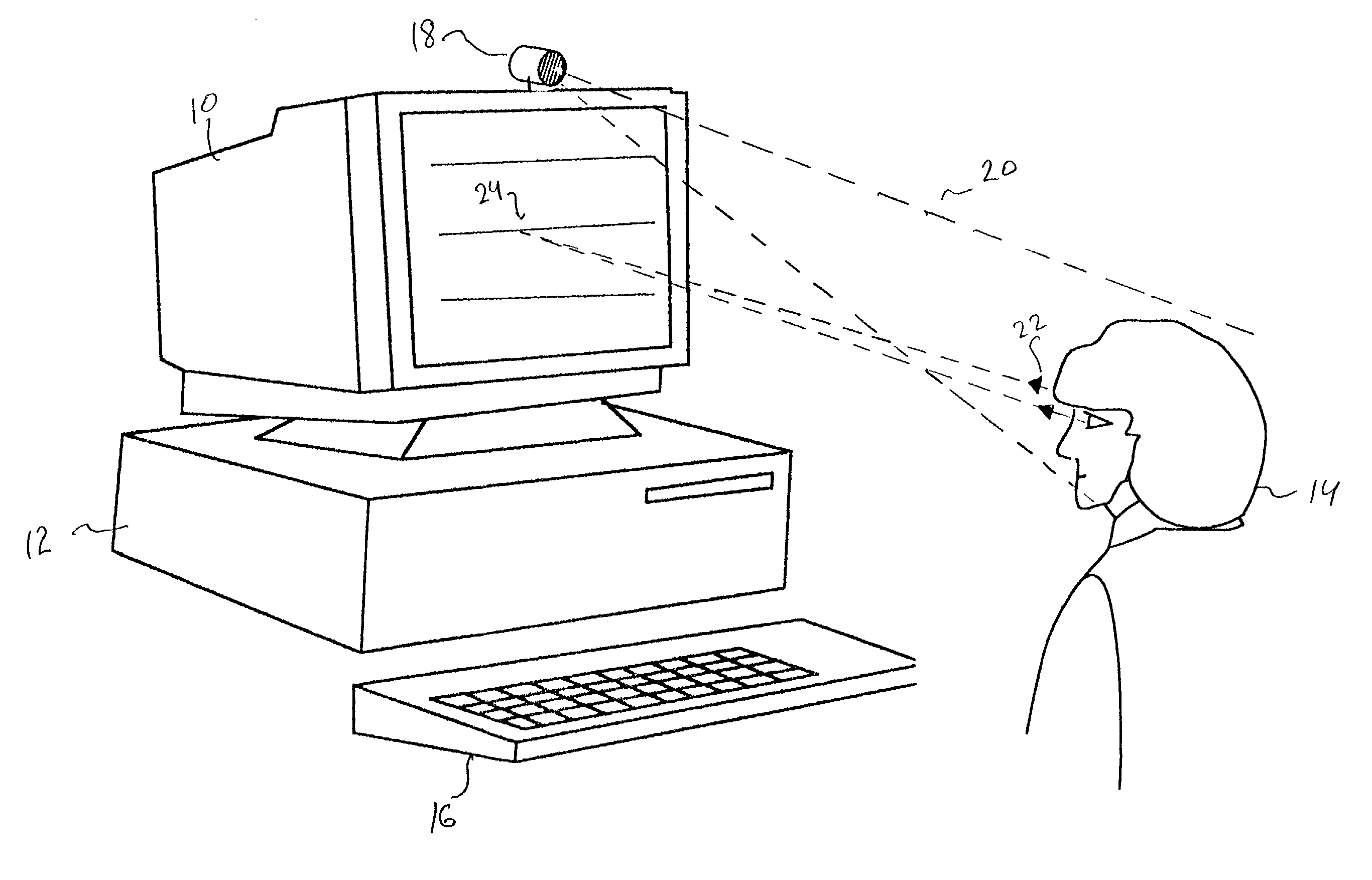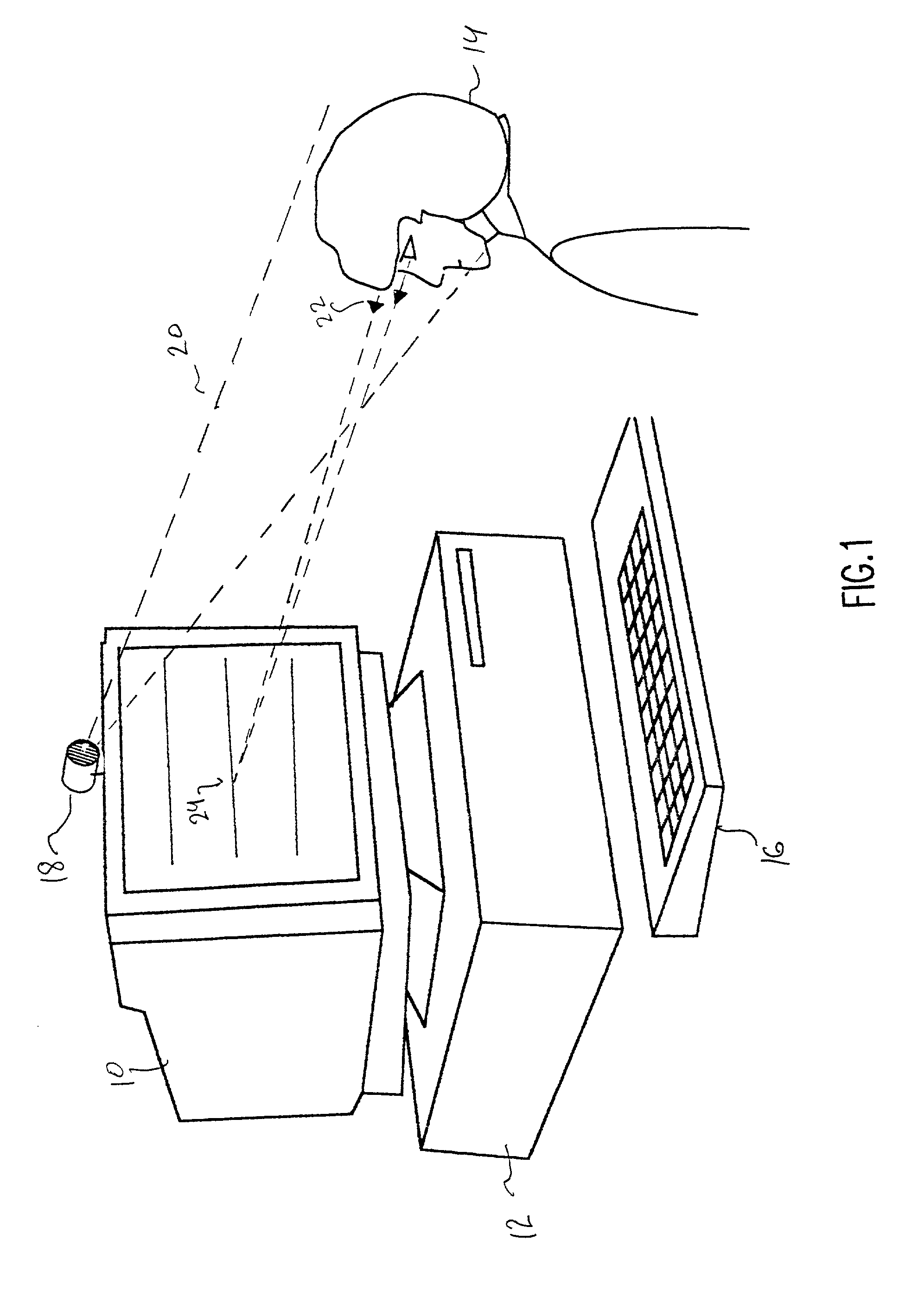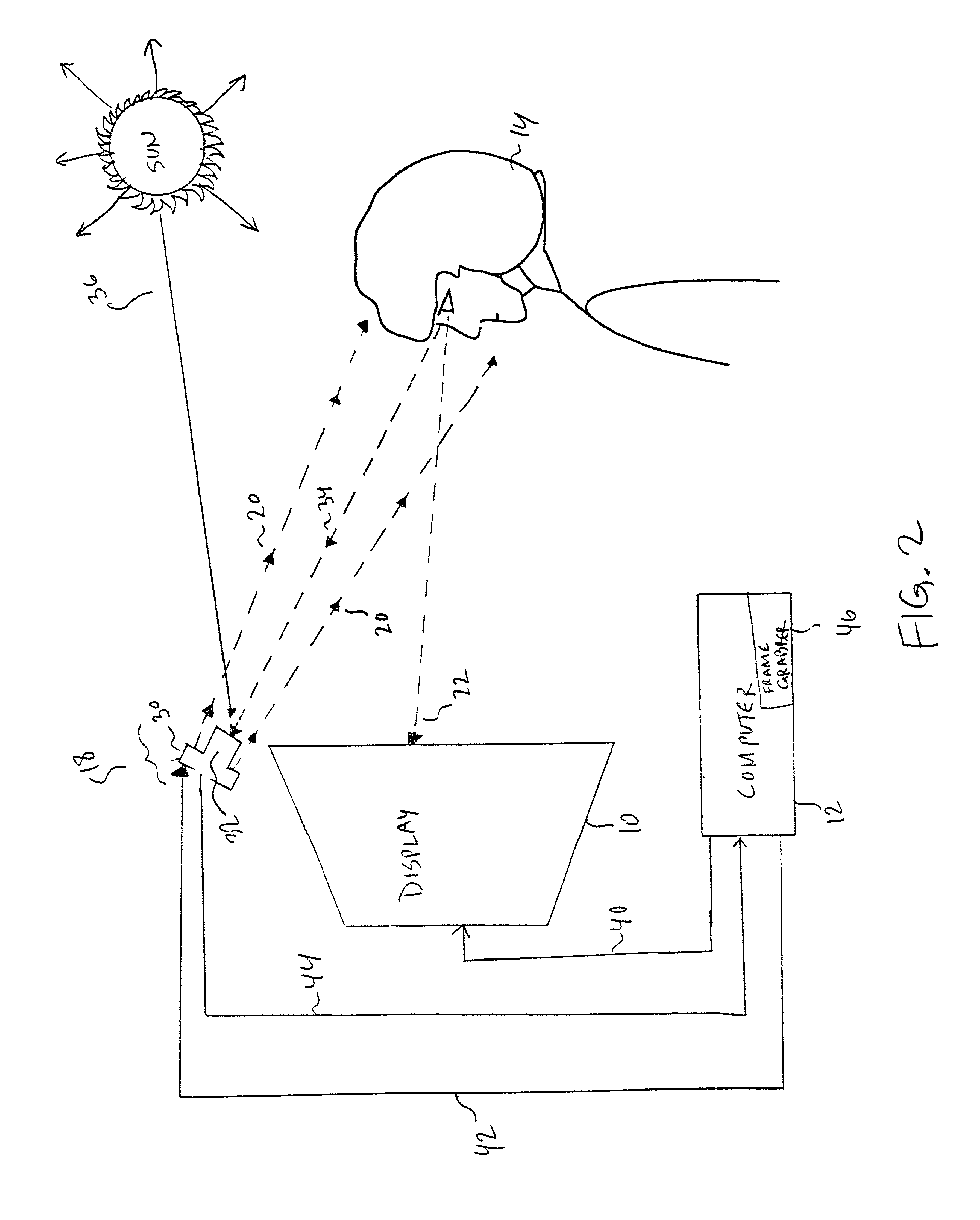Method for increasing the signal-to-noise in IR-based eye gaze trackers
a technology signal-to-noise, which is applied in the field of eye gaze tracker, can solve problems such as inability to solve, and achieve the effect of reducing ambient ir nois
- Summary
- Abstract
- Description
- Claims
- Application Information
AI Technical Summary
Benefits of technology
Problems solved by technology
Method used
Image
Examples
first embodiment
[0023]the present invention, exploits the observation that the intensity of sunlight and its constituent wavelengths of light, such as infrared radiation, do not vary rapidly. During the inter-frame interval of the camera 32 (typically 1 / 30th of a second), the level of ambient infrared radiation can be considered nearly constant. Therefore, the computer modulates the intensity of the illuminator 30 with respect to time. In this case, the modulation of the illuminator signal 42 is synchronized with each frame of the camera 32 such that the illuminator 30 alternates between on and off with each subsequent frame. A video frame grabber 46 digitizes and captures each frame. If one considers a sequence of such frames, then the image captured in the first frame contains both the illuminator signal and the ambient radiation information. The image captured in the second frame contains only the ambient radiation information. By subtracting, pixel-by-pixel, the second frame from the first fram...
third embodiment
[0030]As shown in FIG. 5, in the third embodiment, the computer synchronizes the illuminator 30 with the even and odd horizontal pixels. For example, the illuminator would be on for all even numbered horizontal pixels and off for the odd numbered horizontal pixels. This would effectively form alternating vertical stripes consisting of signal and noise or just noise information. The illuminator signal would be extracted by subtracting adjacent pixels from each other and taking the absolute value. Naturally, this modulation scheme would require an illuminator 30 capable of turning on and off many hundreds of times faster than required for the other schemes. This approach could be used with frames or fields.
[0031]As shown in FIG. 6, the second and third modulation techniques shown in FIGS. 4 and 5 can also be combined to yield a checkerboard pattern of noise pixels and signal plus noise pixels with adjacent pixels being subtracted to yield a reflection signal having improved S / N charac...
PUM
 Login to View More
Login to View More Abstract
Description
Claims
Application Information
 Login to View More
Login to View More - R&D
- Intellectual Property
- Life Sciences
- Materials
- Tech Scout
- Unparalleled Data Quality
- Higher Quality Content
- 60% Fewer Hallucinations
Browse by: Latest US Patents, China's latest patents, Technical Efficacy Thesaurus, Application Domain, Technology Topic, Popular Technical Reports.
© 2025 PatSnap. All rights reserved.Legal|Privacy policy|Modern Slavery Act Transparency Statement|Sitemap|About US| Contact US: help@patsnap.com



